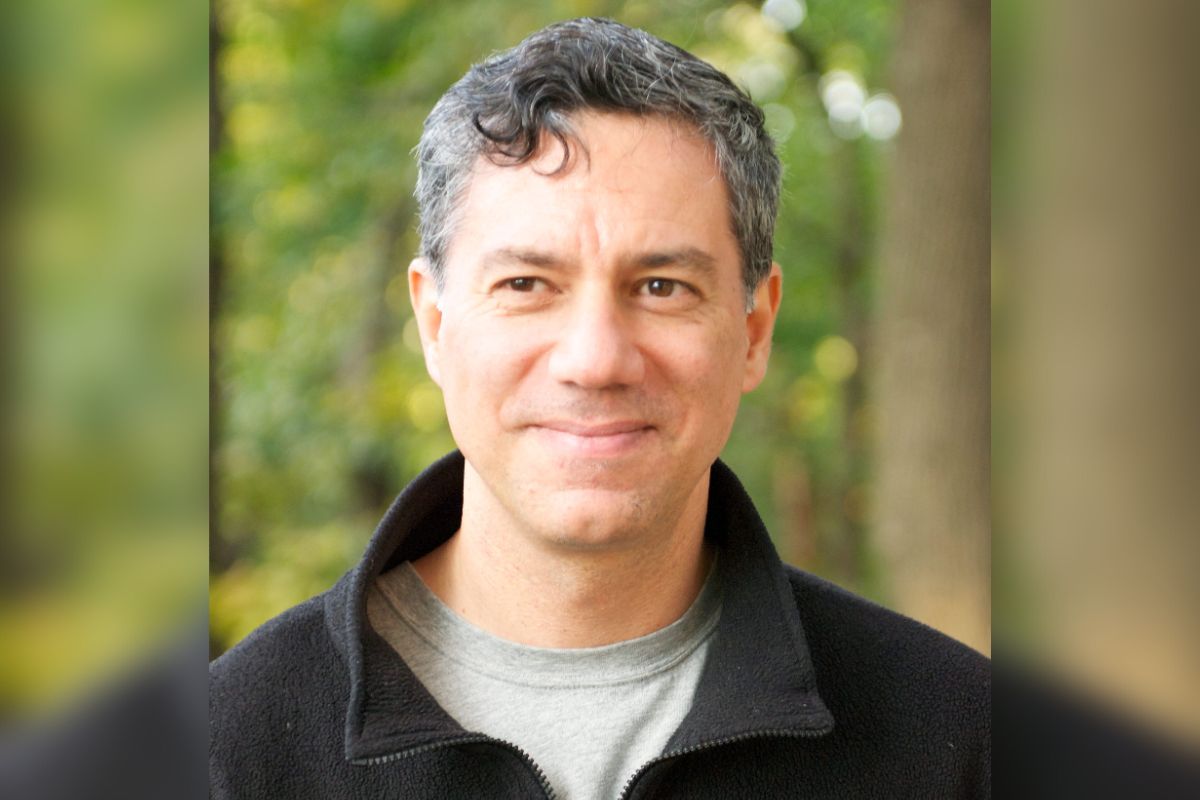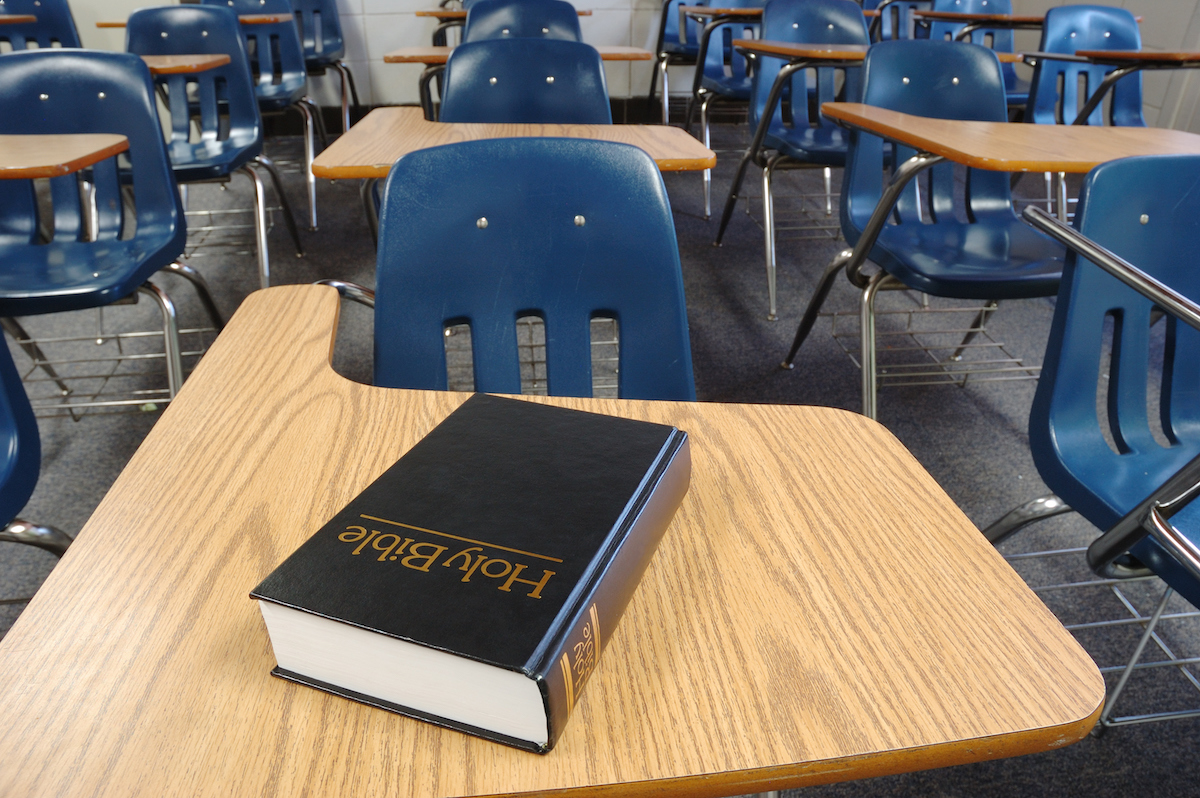If students begin at the St. Isidore of Seville Catholic Virtual School next fall, they’re set to experience religious teachings incorporated into their lessons. That is if America’s first-ever religious charter school — which critics argue violates the constitutional separation of church and state — is able to skirt legal blows and operate as the first U.S. school of its kind.
After Oklahoma’s attorney general sued earlier this fall and entered the fray, we corresponded with TC’s Samuel Abrams, who leads the National Center for the Study of Privatization in Education, to discuss this development in the battle for education and what’s next.
Key Takeaways:
- A religious charter school is just the latest legal maneuver in a decades-long effort to privatize education, Abrams says
- This development poses risks to funding for education broadly and education quality, all within pre-existing concerns about the efficacy of charter schools, explains Abrams
Read on for the full conversation with Abrams.
Q: The press speculates that this legal battle will span years, and could possibly reach the Supreme Court. In your view, what conditions put the potential of religious charter schools into motion? How did we get here?
SA: We got here the same way we got to the Supreme Court decisions authorizing the use of vouchers at religious schools in Zelman v. Simmons-Harris in 2002, tuition tax-credit scholarships at religious schools in Espinoza v. Montana Department of Revenue in 2020, and taxpayer funding of enrollment at religious schools through so-called town-tuitioning programs in Carson v. Makin in 2022.
The concept of religious charter schools is merely the next logical step for advocates of public funding for private education and it would mean vastly more public money going to religious education. Justice Stephen Breyer, in fact, anticipated precisely this development in the oral arguments for Espinoza when he asked the lawyer for the plaintiffs if funding of religious schools through tuition tax-credit scholarships ultimately meant the government should fund religious charter schools. This matter has, in essence, thus already made it to the Supreme Court.

Samuel E. Abrams, Director of TC's National Center for the Study of Privatization in Education. (Photo: TC Archives)
The road to this point has been paved by dedicated, deep-pocketed supporters of educational privatization. And we can trace this road back to a memorandum to the chairman of the Education Committee of the U.S. Chamber of Commerce written by Lewis Powell in 1971, soon before he joined the Supreme Court himself as an appointee of President Nixon.
In that memorandum, Powell wrote that the left was steadily encroaching on liberty and free enterprise and that the only way to reverse the tide was to win the battle of messaging, which would, in turn, require significant investment in think tanks and advocacy organizations to churn out reports explaining and extolling the wisdom of the market.
In his 2012 book on income polarization, Who Stole the American Dream?, Hedrick Smith used Powell’s memorandum as his point of departure. We can likewise do the same in assessing the growing privatization of education.
The concept of religious charter schools is merely the next logical step for advocates of public funding for private education and it would mean vastly more public money going to religious education...The road to this point has been paved by dedicated, deep-pocketed supporters of educational privatization.
In the wake of Powell’s memorandum surfaced one think tank or advocacy organization after another pushing for educational privatization as well as many other market-driven reforms. Both the Heritage Foundation and the American Legislative Exchange Council (better known as ALEC) were established in 1973. The CATO Institute was established in 1977. The Alliance for School Choice was established in 1990 (and renamed the American Federation for Children Growth Fund in 2004). The Milton & Rose D. Friedman Foundation for Educational Choice was established in 1996 (and renamed EdChoice in 2016). And the Charter School Growth Fund was established in 2004. These organizations together spend tens of millions of dollars a year getting out the message for educational privatization. In addition, they helped finance the lawsuits that led to the Supreme Court decisions in Zelman, Espinoza, and Carson.
Q: Aside from threatening public school enrollment, what kind of implications do religious charter schools pose for students and families?
SA: The problem with religious charter schools would be the same problem — but on a much larger scale —that we already see with vouchers used to fund enrollment at religious schools. We’re losing the common ground that public schools, however imperfectly, long afforded this country. As Justice John Paul Stevens wrote in his dissent in Zelman, “Whenever we remove a brick from the wall that was designed to separate religion and government, we increase the risk of religious strife and weaken the foundation of our democracy.”
Stevens was worried 21 years ago that the divisions defining Ireland, the Balkans, and the Middle East could open up here if we failed to safeguard shared space. Indeed, the last thing we need in this country is more division.

Supreme Court. (Photo: iStock)
In addition, the religious indoctrination that Stevens saw as basic to such division necessarily gets in the way of a proper understanding of science.
Creationism, for example, has no place in biology classes. For something to be scientifically true, it must be falsifiable. But concepts like creationism are articles of faith. They can’t be falsified. Creationism is nevertheless widely taught in religious schools. And the problem with such misguided instruction does not stop with a mischaracterization of physical, chemical, and biological phenomena. As consequential, if not more, is the mischaracterization of scientific method. Students need to learn how to evaluate evidence in no matter the domain, from assessing global warming and understanding vaccines to judging the legitimacy of election results.
Q: Given the ongoing debate surrounding inclusive curriculum in public schools, one could make the argument that another option for more conservative parents could diffuse the tension and let families more easily opt-out of curriculum they don’t agree with while still offering a less limited curriculum in public schools. Why do some view religious charter schools as a problem rather than a solution?
SA: The problem is the likelihood of insufficient regulation. If religious charter schools operate like many conventional religious schools, there won’t be sufficient supervision of curricula, adequate credentialing of teachers, or proper protocol for student admissions and re-enrollment.
Whenever we remove a brick from the wall that was designed to separate religion and government, we increase the risk of religious strife and weaken the foundation of our democracy.
Q: While some leaders are excited about a religious charter school, other religious leaders have opposed this potential policy shift, arguing that accepting public funding undermines the religious education model that offers more autonomy and can navigate with fewer regulations. Meanwhile, other critics also point out that while charter schools are required to be open to all students, it is unclear if religious charters would be required to accept students from LGBTQ+ families, etc. At the heart of this is a debate on what is best for students. Based on existing charter school research, what do we already know?
SA: Existing charter school research indicates substantial problems with barriers to entry as well as forced attrition. It stands to reason that such problems would only be exacerbated by the introduction of religious charter schools.
As for what’s next, we can expect the case to continue to make its way through the legal system. Stay tuned for more insight from Sam Abrams and other TC experts on the issue.
